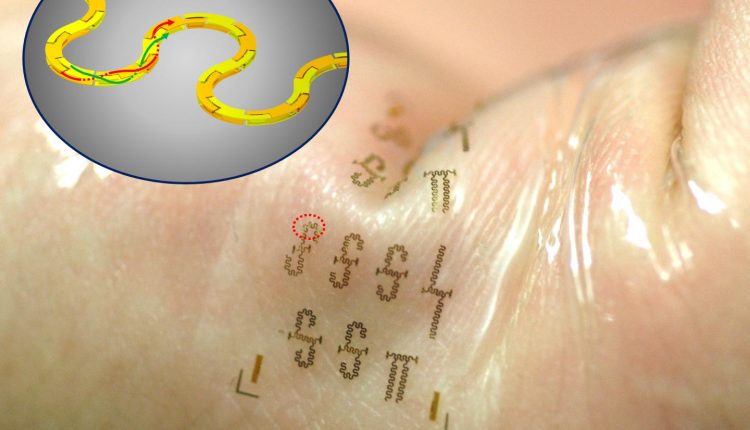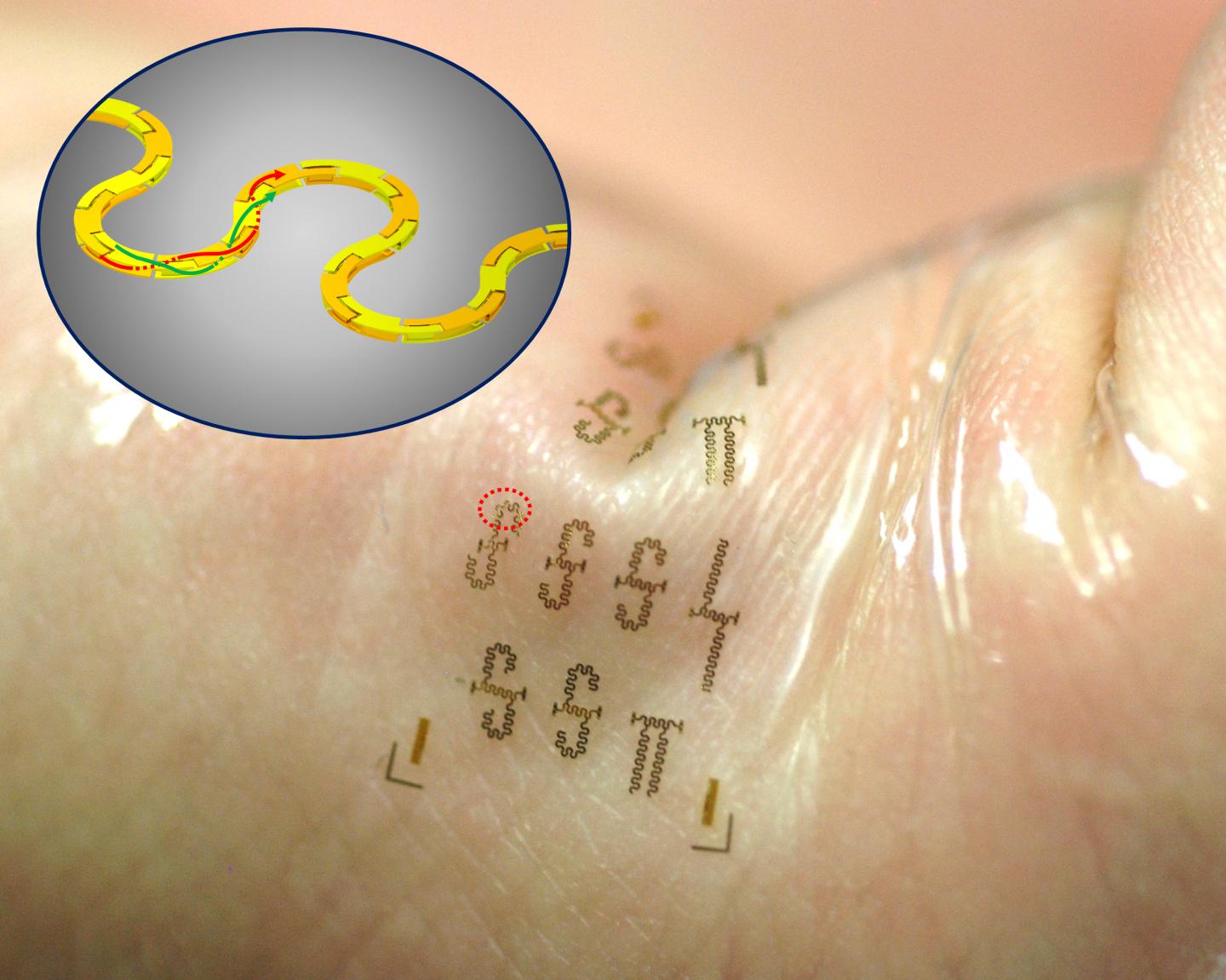
These stretchy circuits could allow for wireless patient monitoring
However unpleasant, imagine your next hospital visit. Now imagine it includes some high-tech temporary tattoos.
Soon, thanks to new developments by a team of engineers from the University of Wisconsin-Madison, medical patients will have a more pleasant experience during their hospital stays because of wireless monitoring — the result of the a new stretchy circuit.
The team’s breakthrough — the world’s fastest stretchable, wearable integrated circuit is an advance that could drive the Internet of Things and result in a much more connected, high-speed wireless world.
The integrated circuit is a platform for manufacturers looking to expand the capabilities and applications of wearable electronics, which include those for biomedical applications, but can reach to any wearable like consumer gadgets and air purification gadgets.

What makes these stretchy integrated circuits so powerful is their structure,which was inspired by twisted-pair telephone cables. The circuits contain two ultra-tiny intertwining power transmission lines in repeating S-curves.
This serpentine shape looks like a 3D puzzle and is composed of segmented metal blocks to provide the transmission lines with the ability to stretch and not affect performance. This structure also helps shield the lines from outside interference, as well as confines the electromagnetic waves flowing through them. This almost completely eliminates current loss. Currently, the team’s stretchable integrated circuits can operate at radio frequency levels up to 40 gigahertz.
“We’ve found a way to integrate high-frequency active transistors into a useful circuit that can be wireless,” said Zhenqiang “Jack” Ma, the Lynn H. Matthias Professor in Engineering and Vilas Distinguished Achievement Professor in electrical and computer engineering at UW-Madison. “This is a platform. This opens the door to lots of new capabilities.”
In addition to its capabilities, the stretchy circuit is different from other stretchable transmission lines, with widths around 640 micrometers (or .64 millimeters) because they are just 25 micrometers (or .025 millimeters) thick, a measurement small enough to be highly effective in epidermal electronic systems, along with many other applications.
The team envisions that the technology could be used in a hospital’s intensive care unit and be applied to the patient’s skin like a temporary tattoo. This would allow the health care staff to monitor patients remotely and wirelessly, as well as make the patient’s experience a little more comfortable by decreasing the tangled cables and wires.
As manufacturers try to develop devices that employ the next-gen wireless broadband technology called 5G, these new developments are necessary. When it comes to mobile communications, the wide microwave radio frequencies of 5G networks will accommodate the growing population of cellphone users and increase data speeds. The technology will run on radio frequencies, with wavelength sizes between a millimeter and a meter and that use frequencies in the .3 gigahertz to 300 gigahertz range.

Comments are closed, but trackbacks and pingbacks are open.